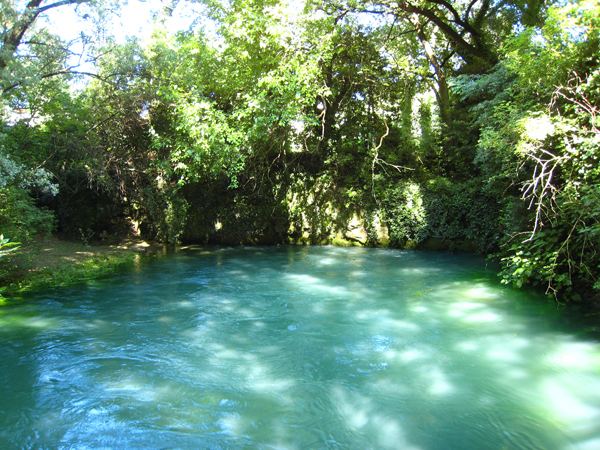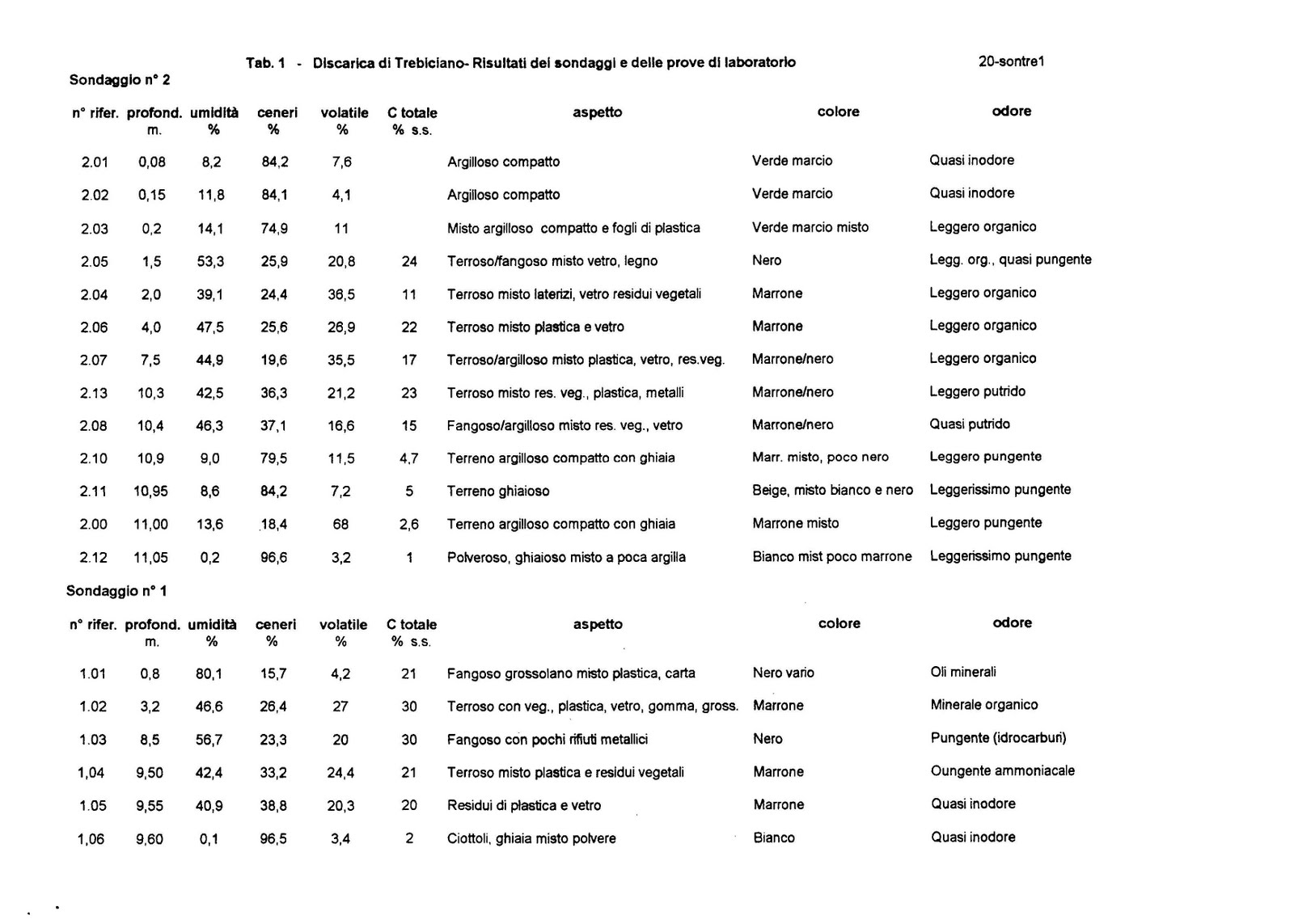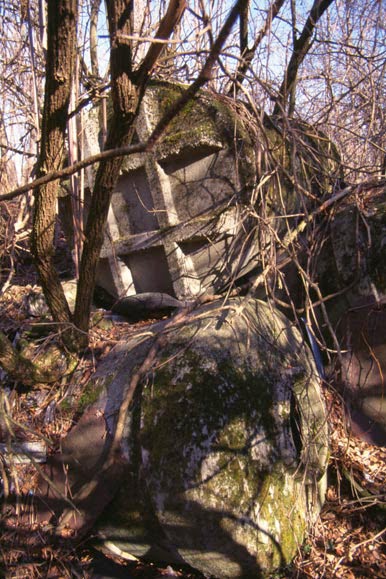WHERE THE TIMAVO FLOWS – 14 August 2011
The landfills hidden on the Karst. A trip to Trebiciano – Trebče.

This article is an abstract from book “Tracce di Legalità – come le mafie e le corruzioni italiane inquinano il Territorio Libero di Trieste”.
The book’s English version is “Tracks of Legality – how Italian corruptions and mafias pollute the Free Territory of Trieste”.
***
« …another place where the degradation of the Karst is very visible, a little town that unfortunately is famous for being turned into a huge open-air landfill; this town is the symbol of unspeakable violence against an environmental World Heritage Site: Trebiciano – Trebče.
So far, the dumping ground in Trebiciano is the biggest of the Triestine Karst; it is located about 1,5 Km away from the town and about 1 km away from the border with Slovenia.
Between 1958 and 1972, this was a landfill for urban solid waste, and the Municipality of Trieste managed it: it covered an area of about 120,000 square meters, spoiling and devastating its environment. At least 600,000 cubic meters of all kinds of waste were dumped in this area, filling up its main dolinas, which now appear as hills. There are sectors covered with more than 20 meters of waste.
Only 500 meters away from this landfill there is the abyss of Trebiciano – Labodnica where, 329 meters in depth, flows river Timavo, which collects the waters of the Karst and supplies with new water the springs in S.Giovanni di Duino – Štivan. For limited that they were, the analysis of the early 1990s found that in the area of the dumping ground there are hydrocarbons heavy metals (cadmium, mercury, nickel, lead, copper, zinc metal) and ashes, at various depth in the ground.
The results of the surveys would leave any reader speechless. The soil that emerges in various areas of the dumping ground has unnatural colors that range from rotten green to black, from brown to beige, a mixed white, as well as consisting of all kinds of mixed materials, including solid waste (plastics, glass, gum, metal, etc.). It sure doesn’t look like the regular Flysch that constitutes the land of the Karts.
Even the Organoleptic analysis undeniably shows that in the land there are oils, hydrocarbons, ammonia and other unidentified substances. The analyses found that in the waste there were also traces of biogas, and the inhabitants of the town reported leaks of gas from the southern side of the landfill.
Due to the nature of this Karst site and the lack of any sealing, the Trebiciano landfillremains a serious source of contamination for the waters that ow in the underground. The reason why the pollution of hypogeal waters remained unnoticed for so long is simple: in the 1960s river Timavo wasn’t a water supply yet, and back then analyses on the matter were very scarce.
Then, in the 1970s, pollution caused by percolating, contaminated waters from the dumping ground covered even organic pollution in upper Timavo. The percolating waters’ organic load is estimated equivalent to that of no less than 30,000 people.
A partial, attempted forced re-naturalization started in 1980s but it did not solve the problem of pollution at all, which is still affecting the whole area. The former Trebiciano dumping ground is a true “chemical bomb” in the middle of the Karst.
 Results of the cores taken from the area of the dumping ground of Trebiciano, showing the serious level of pollution affecting that area. Results of the cores taken from the area of the dumping ground of Trebiciano, showing the serious level of pollution affecting that area. |
During our investigation in this “doomed” town that was sacrificed with its environment to the interests of institutionalized ecomafias, we interview many inhabitants and lm a documentary about the landfill. The people provide us precious witnesses of how the uncontrolled dumping worked as well as of the problems it has caused to the town.
This is how we discover that the police escorted the waste, the “special” waste that was supposed to remained unnoticed, up to the dolinas where it was disposed. This method resembles that used in Italy whenever the State entrusts organized criminality to get rid of “inconvenient” waste. However, in the Free Territory of Trieste the authorities took care of it themselves, without intermediaries.
It was the Police, the Carabinieri, and the Finance Police to do it instead of the Mafia, the Camorra and the ′ndrangheta. But the result is the same: an “environmental disaster”.
Some of the inhabitants complain because public authorities allowed and even committed this shameful action, but they never cared about the effects of so much pollution on the population of Trebiciano – Trebče, which includes also an increasing rate of tumorous diseases.
As we enter the former landfill, we find the visible, tangible evidences of the environmental disaster. We climb the “hills of shame” which are the biggest dolinas now over filled with waste: there is waste coming out of the ground. The smaller dolinas of this area contain huge, abandoned drums. Drums that likely contain sludge. On the bottom of a dolina used to dump hydrocarbons there is an oily puddle with an unmistakable smell. It is a (unnatural) rising of oil in the middle of the Karst.
Since they were closer to the town and thus to the street, some dolinas became useful potholes to dispose sewage and petrochemical refinery waste. It worked like this: the tankers would approach the chosen dolina and dump their shameful load of waste right in it. It was the Municipality of Trieste to allow it. And the fact that down here flows river Timavo was of no interest for them: all they cared about was to make the poison “disappear”.»

Drums full of industrial waste emerging from the soil of one of the dolinas in the former dumping ground of Trebiciano-Trebče.
Translated from blog “Environment and Legality” – “Ambiente e Legalità” by Roberto Giurastante

RT @TriesteLibera: WHERE THE #TIMAVO FLOWS by @RobertoGiurasta #Trieste #pollution #environment #FTT https://t.co/Fci8W6ksDU
WHERE THE #TIMAVO FLOWS https://t.co/hgGufslZpw by @RobertoGiurasta & @TriesteLibera #Trieste #pollution #environment #FTT
RT @TriesteLibera: WHERE THE #TIMAVO FLOWS by @RobertoGiurasta #Trieste #pollution #environment #FTT https://t.co/Fci8W6ksDU
WHERE THE #TIMAVO FLOWS by @RobertoGiurasta #Trieste #pollution #environment #FTT https://t.co/Fci8W6ksDU
RT @TLambiente: WHERE THE #TIMAVO FLOWS: https://t.co/mewTn863YA
#Trieste #pollution #environment #FTT #legality https://t.co/qupK6LJGxy
RT @TLambiente: WHERE THE #TIMAVO FLOWS: https://t.co/mewTn863YA
#pollution in the #FreeTerritory of #Trieste: an #environmentaldisaster
#…
RT @TLambiente: Where the #Timavo flows: https://t.co/mewTn863YA
#environment #pollution #FTT #Trieste
RT @TLambiente: @RobertoGiurasta in English: https://t.co/mewTn863YA
RT @TriesteLibera: WHERE THE #TIMAVO FLOWS: https://t.co/HKcbdkJdnI
#Trieste #pollution #environment #FTT #legality https://t.co/UyZBvUEmi0
WHERE THE #TIMAVO FLOWS: https://t.co/HKcbdkJdnI
#Trieste #pollution #environment #FTT #legality https://t.co/UyZBvUEmi0